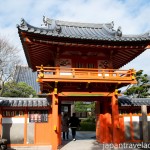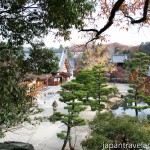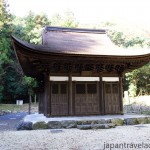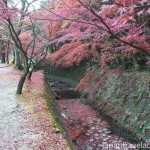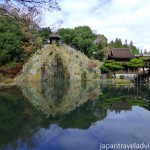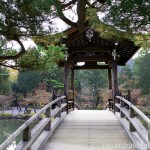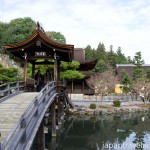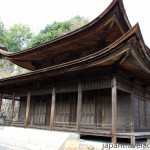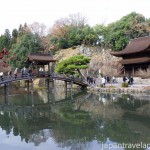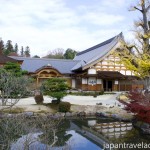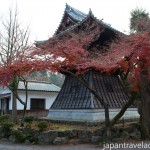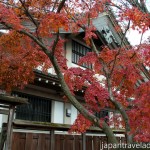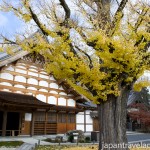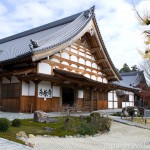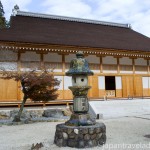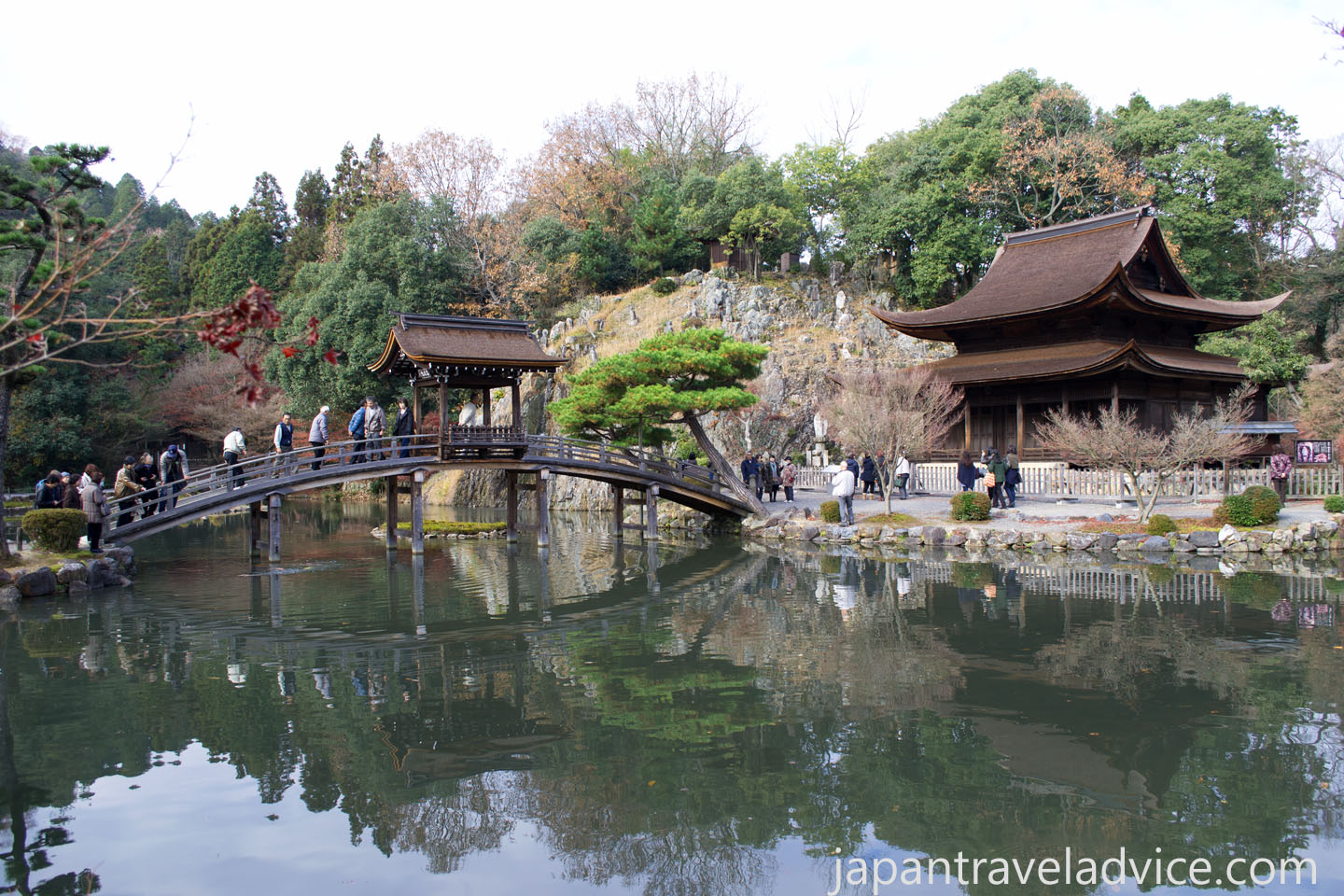
Kokeizan Eihoji Temple
Kokeizan Eihoji Temple located in Tajimi City, Gifu Prefecture was established by the Nanzen-ji branch of Rinzai Zen Buddhism. The temple was founded in 1313 and contains two buildings that are listed as National Treasures. These are the Kannon-do and Kaisan-do. The temple grounds and gardens are breathtakingly beautiful and have been designated as a place of National Scenic Beauty. They include a stunning Zen garden with pond, bridge, and waterfall. Kokeizan Eihoji Temple in my opinion is a hidden gem, and can match the scenic beauty of famous temple complexes such as Ginkakuji Temple in Kyoto and Byodo-in in Uji.
The buildings within the Kokeizan Eihoji Temple complex are very interesting and combine both Chinese and Japanese architectural styles. Kokeizan Eihoji Temple is also ranked one of the best spots in Gifu Prefecture for momiji or autumn leave viewing.
What to See at Kokeizan Eihoji Temple
Eihoji Temple Hondo (Main Hall)
The first building you see upon entering the temple complex is the large Eihoji Temple Hondo (Main Hall). The original building was destroyed by fire during the Sengoku Period, but the current building is still beautiful, especially with the stone lanterns out front.

Kannon-do Hall
The Kannon-do is a National Treasure famed for its Zen architecture, and the building is where a statue of Kannon (Goddess of Mercy) is enshrined. It was built the year after Muso Kokushi visited Kokeizan in 1314. Muso Kokushi was a Rinzai Zen Buddhist monk, teacher, calligraphist, poet and garden designer, who was the most famous monk of his time. He is credited with creating the amazing Zen garden at Kokeizan Eihoji Temple as well as those in Koke-dera and Tenryuji Temple in Kyoto.

Musaibashi Bridge
This Musaibashi or Endless Bridge is the main attraction at Kokeizan Eihoji Temple and it is very picturesque. Crossing the famous Musaibashi Bridge leads you to the Kannon-do. It is a magnificent looking arched bridge and the journey over it is very spiritual. It is said that crossing the bridge to the Kannon-do symbolizes travelling to a place of enlightenment. Once you have crossed over the bridge to the Kannon-do, you should not cross back over, but walk around it in order to exit.

Kaisan-do Hall
The Kaisan-do of Kokeizan Eihoji Temple is a National Treasure and valuable Japanese cultural property. It houses the Kenpon Choshoku Senju Kannonzo, which is a National Cultural Asset designated silk fabric rendering of the Thousand Armed Kannon (Goddess of Mercy), as well as calligraphy by the founding priests of Kokeizan Eihoji Temple. It is believed that Ashikaga Takauji built this building in 1352 during the Muromachi Period. This style of building with Chinese influences was popular during the Muromachi Period of Japanese history. Ashikaga Takauji (1305-1358) was the founder and first shogun of the Ashikaga Shogunate. There is a statue of Muso Kokushi sitting at the rear of the Kaisan-do.

The Famous Gingko Tree
Kokeizan Eihoji Temple has a large Gingko tree that is close to 700 years old. The tree is said to have been planted by the founder of the temple, Buttoku Zenji. The tree is 25.3 meters high with a 4.33 meter girth. It is a popular spot for photos during the autumn in Japan.

Hojuin Temple
Located on top of a small hill, the Hojuin Temple immediately grabs you with its striking red coloured gate that is very impressive. It is a subsidiary temple of the main Kokeizan Eihoji Temple.

The Temple Grounds and Gardens
The temple grounds and gardens were designed by Muso Soseki, also known as Muso Kokushi (National Zen Teacher), who was the most famous monk of his time. The grounds and Zen garden include the carp filled pond with the Musaibashi Bridge as well as a spectacular waterfall cascading over rocks. They have been designated as a place of National Scenic Beauty. The picturesque gardens are stunning all year round with beauty in spring with the cherry blossoms, early summer with the wisteria, autumn with the fall colours, and winter with white snow landscapes.

History of Kokeizan Eihoji Temple
The historic Zen temple was founded in 1313 during the period of Emperor Komyo. By the Emperor’s decree the temple played an important role of offering prayers for the safety and prosperity of the nation, as well as the Imperial Household. The temple was at its peak during the 14th and 15th centuries, and contained around 30 buildings at the time. Unfortunately, most of these were destroyed by fire during the Sengoku (Warring States) Period. The Kannon-do and Kaisan-do did survive intact and each has been designated as National Treasures.
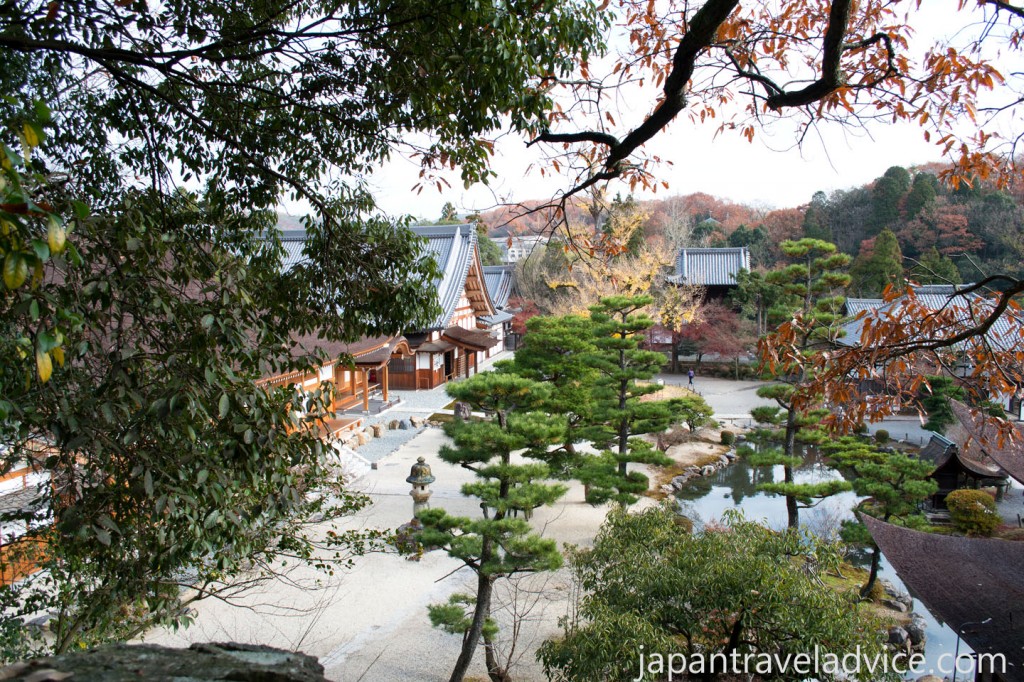
Opening Hours
Kokeizan Eihoji Temple is open from 5:00 am to 5:00 pm
Entry Fee
Admission to the Temple Complex is free
Free parking is also available near the temple
How to Get There
It is a 45 minute train ride from Nagoya on the Chuo Line to Tajimi Station. Take the Totetsu Bus from JR Tajimi Station (12 minute bus ride) and get off at the Kokeizan bus stop. It’s about a 7 minute walk from the bus stop to Kokeizan Eihoji Temple. If you come by car, free parking is available near the train line just before the temple.
Address: 1-40 Kokeizancho, Tajimi-shi, Gifu-ken 507-0014
View Larger Map
Best Time to Go
Kokeizan Eihoji Temple is especially beautiful during the autumn with the beautiful changing of the colours. It is also a popular spot for the cherry blossoms in spring.
Tip: The view of the temple complex from the top of the hill near the Hojuin Temple is breathtaking and definitely worth the short climb up to the top.
Photo Gallery
